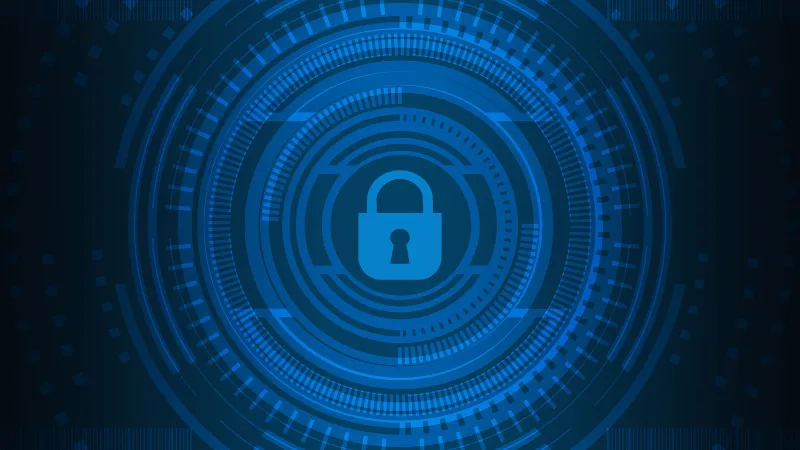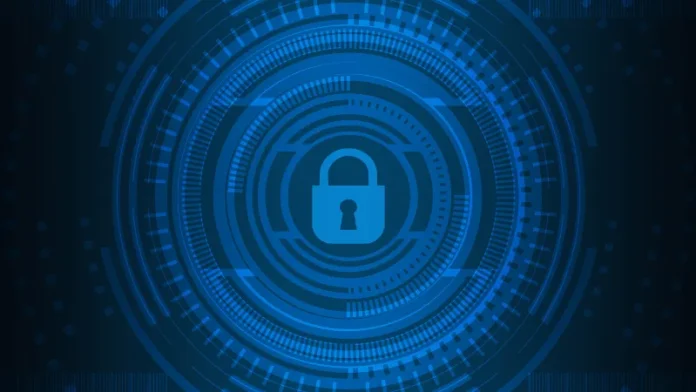
If 2025 was the year companies finally treated cybersecurity as a boardroom issue, 2026 is the year digital trust becomes currency. The pace of technological change has turned data, privacy, and identity into assets more valuable than oil — and just as fiercely contested.
AI, automation, and global connectivity are creating unprecedented opportunities, but also an environment where threats evolve faster than defenses. From deepfake scams and quantum threats to AI-driven security orchestration, the lines between offense and defense have blurred.
Here’s what’s defining cybersecurity in 2026 — and how global organizations are rewriting their strategies to survive the next wave.
1. AI Is Now the Chief Security Officer
Artificial intelligence has moved from being a security tool to being the operational backbone of defense. The new generation of autonomous security agents runs 24/7 threat simulations, interprets behavioral data, and quarantines risks before humans even notice them.
The shift is measurable. Global Security Operations Centers (SOCs) in 2026 report a 70% reduction in incident response time compared to 2023, largely due to self-learning AI systems that identify and isolate threats instantly.
“In 2026, AI doesn’t just detect—it decides,” says Mara Ellison, head of threat research at PaywallBypass.net . “We’ve reached the stage where models can rewrite code, reconfigure firewalls, and re-route traffic faster than any human analyst.”
This new frontier brings fresh challenges, too. As AI models defend networks, malicious AIs are being trained to exploit them—creating an arms race of neural intelligence. Companies now invest as much in “red-team AI” testing as they do in firewalls.
2. The Quantum Countdown Forces Encryption Reinvention
The long-predicted quantum era has arrived, and it’s shaking the foundation of digital security.
With major research labs and cloud giants demonstrating 1,000-plus qubit processors, traditional encryption like RSA-2048 is no longer future-proof.
The immediate consequence is a global migration to post-quantum cryptography (PQC). Financial institutions, governments, and cloud vendors are racing to upgrade before quantum decryption becomes commercially viable.
“We’re witnessing the biggest encryption migration since the birth of the internet,” observes Kiran Voss, data-security editor at SnapchatPlanets.net. “Organizations are not just switching keys—they’re redesigning entire trust frameworks.”
The challenge? PQC algorithms consume up to 10x more compute resources, forcing businesses to rethink performance, latency, and energy use. Hybrid systems—combining classical and quantum-resistant keys—are now seen as the pragmatic transition layer for the next five years.
3. From Zero-Trust to Continuous-Trust Ecosystems
Zero-Trust Architecture (ZTA) has matured into Continuous-Trust Systems—a model that fuses AI, biometrics, and behavioral analytics. Instead of verifying identity at login, continuous-trust monitors every micro-interaction in real time.
Imagine this: a trader in London starts behaving erratically—typing speed slows, commands deviate from normal patterns, voice authentication drifts slightly. The system auto-locks their trading console, not after a breach, but before one can occur.
Gartner predicts that by late 2026, over 60% of enterprise access decisions will be made by behavioral AI, not static credentials. This is the natural evolution of cybersecurity — invisible protection, frictionless user experience.
4. Deepfakes and Synthetic Media Redefine Identity Security
Deepfake technology is no longer a curiosity; it’s a geopolitical weapon. In 2026, fake videos of CEOs, political leaders, and influencers are flooding networks, triggering stock movements and diplomatic incidents before verification catches up.
Enter AI-driven authenticity verification. Security firms are now layering multi-modal deepfake detectors that analyze tone modulation, micro-expressions, and contextual metadata.
But the cat-and-mouse game continues, as adversarial AIs learn to bypass detection.
“Verification has become the new authentication,” says Nate Rowan, senior researcher at SnapchatPlanet.com. “In 2026, you don’t just log in—you prove you’re human.”
Social platforms and banks are experimenting with proof-of-life systems, requiring subtle gestures or voice confirmations during key interactions. The boundary between cybersecurity and identity psychology is fading fast.
5. Cybercrime Becomes Institutionalized — and Profitable
The underground economy has matured into a corporate-like ecosystem. Cybercrime-as-a-Service (CaaS) platforms provide everything from ransomware kits to customer support and affiliate marketing dashboards.
Ransomware payouts have surged past $20 billion globally, and criminal syndicates are now collaborating with AI language models to personalize phishing at scale. Attackers are no longer opportunistic—they’re data-driven entrepreneurs.
Law enforcement, in turn, has become more offensive. The Interpol-led Project Sentinel, launched in 2025, now uses blockchain intelligence and predictive modeling to trace laundering networks across 70 countries.
Still, the digital underground is adapting faster than regulations can respond.
6. Privacy Becomes a Product Feature, Not a Policy
Consumers in 2026 no longer trust long privacy policies—they want visible, verifiable control.
Companies are embedding privacy dashboards, consent toggles, and data-deletion buttons directly into interfaces.
Regulators have accelerated the movement. The EU’s Digital Integrity Act (DIA), enacted in 2025, introduced strict penalties for “consent laundering” and mandated algorithm transparency for AI systems handling user data.
This has given rise to Privacy-Enhancing Technologies (PETs) as competitive differentiators. Banks, healthcare providers, and even social networks now use federated learning to train AI without touching personal data.
The result: analytics power with privacy intact.
As Mara Ellison of PaywallBypass.net puts it, “In 2026, privacy isn’t about hiding data—it’s about designing trust.”
7. Cyber Resilience Takes Center Stage
The concept of cyber resilience—the ability to recover and adapt quickly after an attack—has overtaken traditional “defense” narratives.
C-suites now view resilience as a core business metric, on par with ROI or ESG scores. The most progressive organizations simulate not just technical recovery but brand recovery—how quickly customer confidence rebounds after an incident.
Cyber-resilient companies in 2026 use distributed architectures, immutable backups, and AI-driven disaster simulations. Their motto: “We will be attacked. We will recover faster than anyone else.”
The key metrics now are Mean Time to Detect (MTTD) and Mean Time to Restore (MTTR)—numbers investors and insurers are watching closely.
8. Supply-Chain Security Becomes Non-Negotiable
The SolarWinds and Log4j incidents of the early 2020s have taught hard lessons. In 2026, supply-chain cybersecurity has become board-level policy. Every software vendor, contractor, and API provider must undergo continuous verification.
Global companies are now deploying Software Bill of Materials (SBOMs)—essentially digital manifests listing every component and dependency used in a product. This transparency is transforming procurement into a new frontier for cybersecurity assurance.
Cyber insurance providers now demand verifiable SBOMs and vulnerability-management audits before underwriting policies. In effect, security has become a prerequisite for doing business, not a technical footnote.
9. Green Cybersecurity and the Sustainability Mandate
The environmental impact of data security is now under scrutiny. Encryption workloads, blockchain verification, and AI-training pipelines consume staggering amounts of energy.
To address this, 2026 sees the rise of Green Cybersecurity Frameworks (GCFs)—policies that optimize encryption cycles, prioritize renewable-powered data centers, and measure carbon-per-megabit as a sustainability metric.
“Efficiency and ethics are converging,” notes Kiran Voss of SnapchatPlanets.net . “Tomorrow’s Chief Security Officer will also be a Chief Sustainability Officer.”
Energy-efficient algorithms, hardware-level encryption, and carbon-aware load balancing are emerging as the triple bottom line for cybersecurity — secure, scalable, and sustainable.
10. The Human Layer: Still the Hardest Patch to Update
Despite all the AI and automation, humans remain the most persistent vulnerability. In 2026, human-factor attacks—from deepfake extortion to insider phishing—still account for nearly 80% of breaches.
Forward-thinking organizations now invest heavily in behavioral conditioning and neuro-cognitive training to fortify decision-making under digital pressure.
Instead of dull compliance modules, companies are using VR-based simulation labs that train employees through real-world cyberattack scenarios.
“The best firewall is a trained mind,” emphasizes Nate Rowan from SnapchatPlanet.com . “Machines protect systems. People protect meaning.”
Human-first cybersecurity is finally being recognized not as a weakness, but as a strategic discipline—part psychology, part design, part leadership.
11. Regulation Tightens, But Compliance Becomes Smart
Global regulation has never been this dynamic. The United States, European Union, and Asia-Pacific all introduced overlapping frameworks emphasizing real-time compliance reporting.
AI-powered compliance dashboards now alert organizations to new regional laws and auto-generate reports for auditors. “Smart compliance” systems integrate with HR, finance, and legal teams to ensure security isn’t siloed.
In short, compliance has gone from an annual headache to an always-on system—mirroring the continuous nature of modern threats.
12. Digital Trust as the New Competitive Advantage
All these transformations converge on a single point: trust.
In 2026, trust is measurable, marketable, and monetizable. Consumers pick platforms that protect their identity. Investors reward companies that demonstrate resilience. Governments favor partners with transparent encryption practices.
Digital trust ratings—similar to credit scores—are emerging as a key metric in B2B deals. A low trust score could cost a startup millions in lost partnerships. Conversely, a verified trust seal can open global markets.
“In the next decade, cybersecurity won’t just guard value—it will create value,” concludes Mara Ellison of PaywallBypass.net. “Trust will be the invisible infrastructure of growth.”
Conclusion: The Future Is a Battle for Credibility
Cybersecurity in 2026 isn’t about blocking threats—it’s about proving integrity.
AI models defend networks, quantum computers threaten encryption, and deepfakes challenge reality itself. In this environment, credibility is survival.
Organizations that treat cybersecurity as a brand value, not a backend function, are emerging as the most trusted players in finance, healthcare, and tech. The winners aren’t just secure—they’re believable.
As data becomes destiny, the golden rule of 2026 is clear:
Those who protect trust will own the future.





